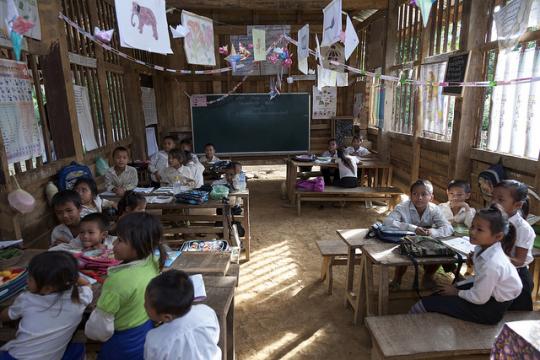
“The child who has gone to a preschool can study in primary school with more ease than a child who joins a primary school directly.” Unfortunately, “preschool fees range from 50,000 to 150,000 Shillings (US$ 20-60) per term of three months. Most parents cannot afford this, so many of them wait until their children are of age to start primary school.”
These quotes from Ugandan villages illustrate how parents value investments in young children, but often cannot afford them. The same is true for healthcare and nutrition. Early years are essential for children’s development. The reality is that investments in early childhood development (ECD) remain low in most countries, in part because of the complexity of the field. ECD policies and programs are managed by multiple public and private service providers, regulatory agencies, and ministries. It is of course not necessary for everyone to be experts on all matters related to ECD, but more awareness of the comprehensive nature of these investments would help in improving ECD programs and marshalling more resources towards them.
The good news is that resources are available to learn about ECD. These resources now include a new and free online self-spaced e-learning course designed by the World Bank. The course consists of three interactive web-based modules: Why invest in ECD?; What matters for ECD?; and How to implement ECD interventions? (For those interested in a more detailed explanation of each of the three modules, see here). Let me summarize the main features of the course.
First, consider the “Why invest in ECD?” question. From a scientific point of view, neurological studies show that synapses develop rapidly during a child’s first few years, forming the basis of cognitive and emotional functioning for life. Research suggests that investments in the first 1,000 days of life are especially important. From an economic point of view, while the specific rate of return on investments in ECD depends on a number of factors, including the focus of a program, duration of exposure and quality, these rates of return have been shown to be as high as 17:1, according to Nobel Economist James Heckman. As just one example, a recent paper in Science suggests that growth-stunted toddlers in Jamaica who benefitted from psychosocial stimulation through weekly visits from community health workers over a two-year period increased future earnings by 25 percent.
Next, consider the “What matters for ECD?” question. What should countries focus on when investing in ECD? The second module of the course uses the ECD toolkit from the Systems Approach for Better Education Results (SABER) framework to assess the quality of ECD programs and policies in a country. SABER ECD identifies three policy goals that matter most for effective ECD country systems: (1) establishing an enabling environment; (2) implementing widely; and (3) monitoring and assuring quality. Taken together, the three goals help in addressing constraints to effective ECD policies, such as fragmented policy between ministries, limited and uneven access to services, and poor quality assurance mechanisms.
Finally, consider the “How to implement ECD interventions?” question. The third module of the course summarizes findings from a 12-year review of the World Bank’s experience with ECD projects, and raises issues related to inter-sectoral coordination between agencies and ministries. The module also covers how to conduct ECD diagnostics for countries or projects, how to use and adapt assessment tools to country context to monitor child growth and development, how to assess the cost of ECD interventions and how to finance them, as well as how to address issues related to project design, implementation, and monitoring and evaluation.
We hope that the course, which is available free of charge, should be of interest to development practitioners in education, health, and social protection who are involved in the design and implementation of ECD projects, but also to policy makers, NGOs and students. The e-learning course takes about four to five hours to complete. I invite you to take the course at your own pace and let me know what you think.
Follow the World Bank Group Education team on Twitter @WBG_Education


Join the Conversation